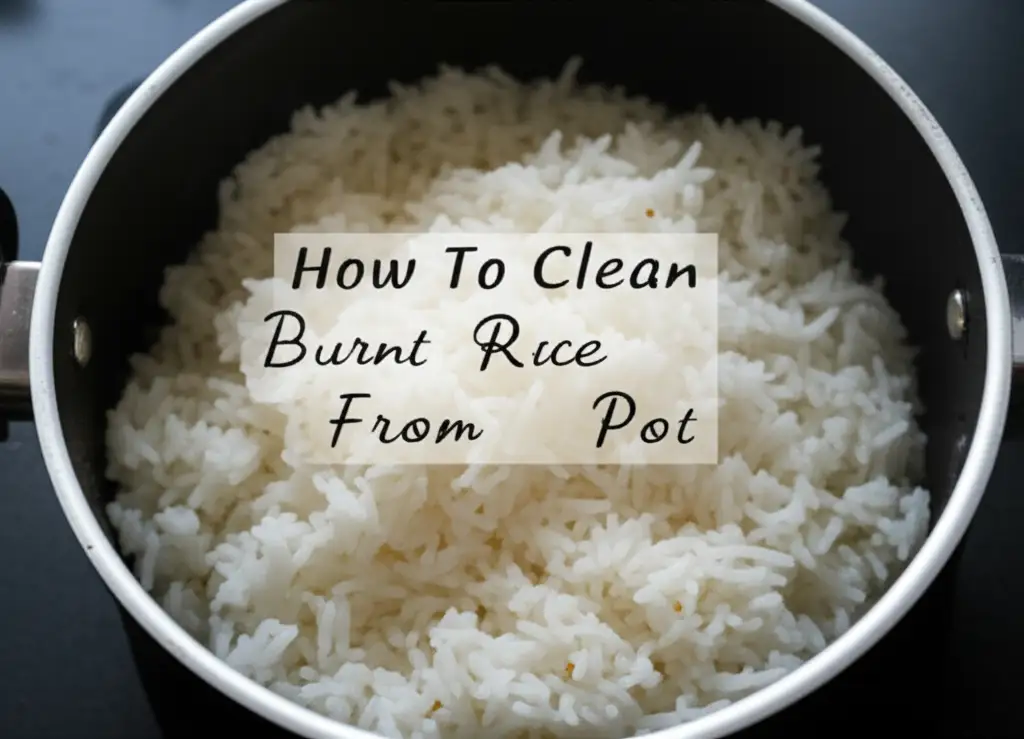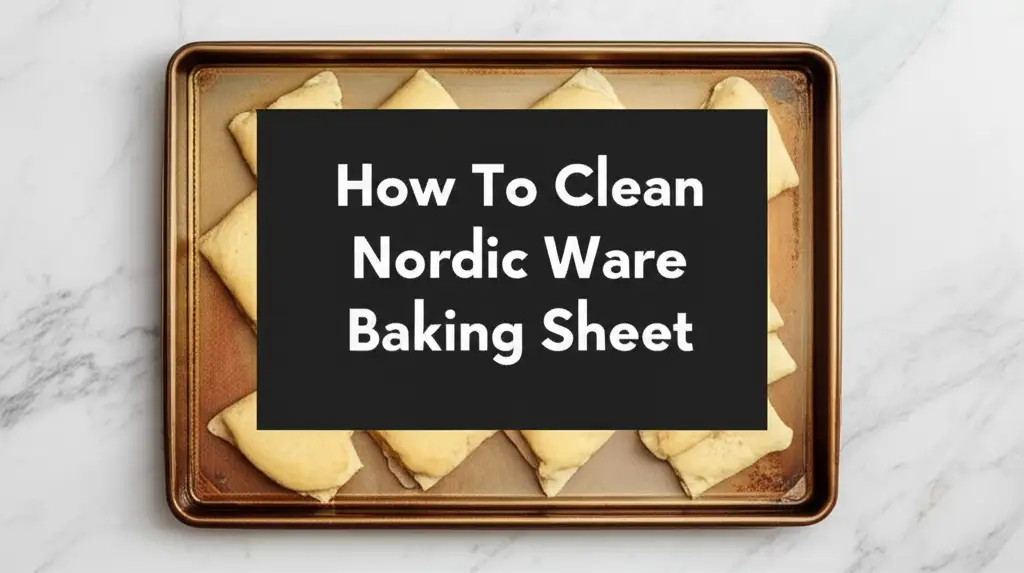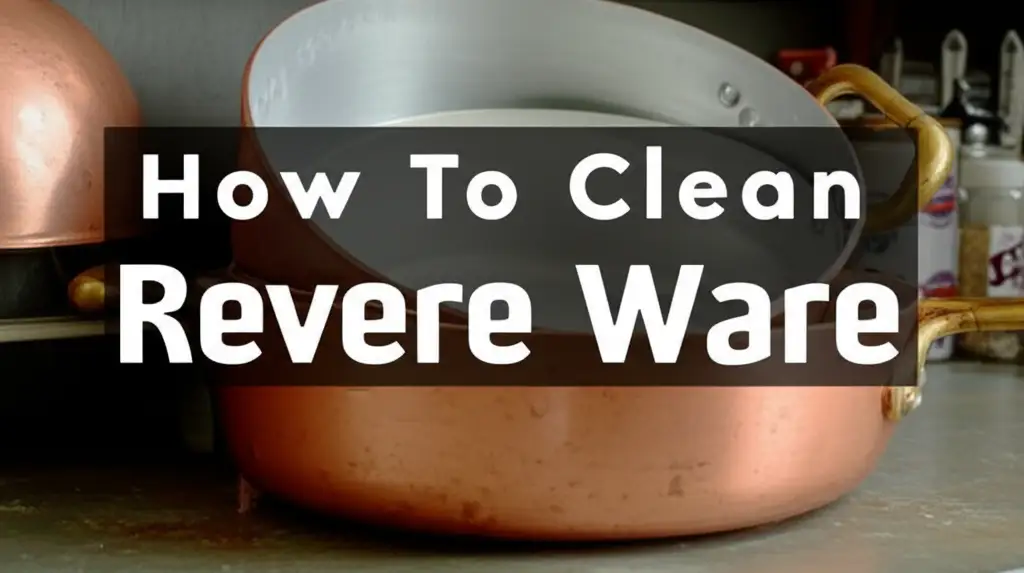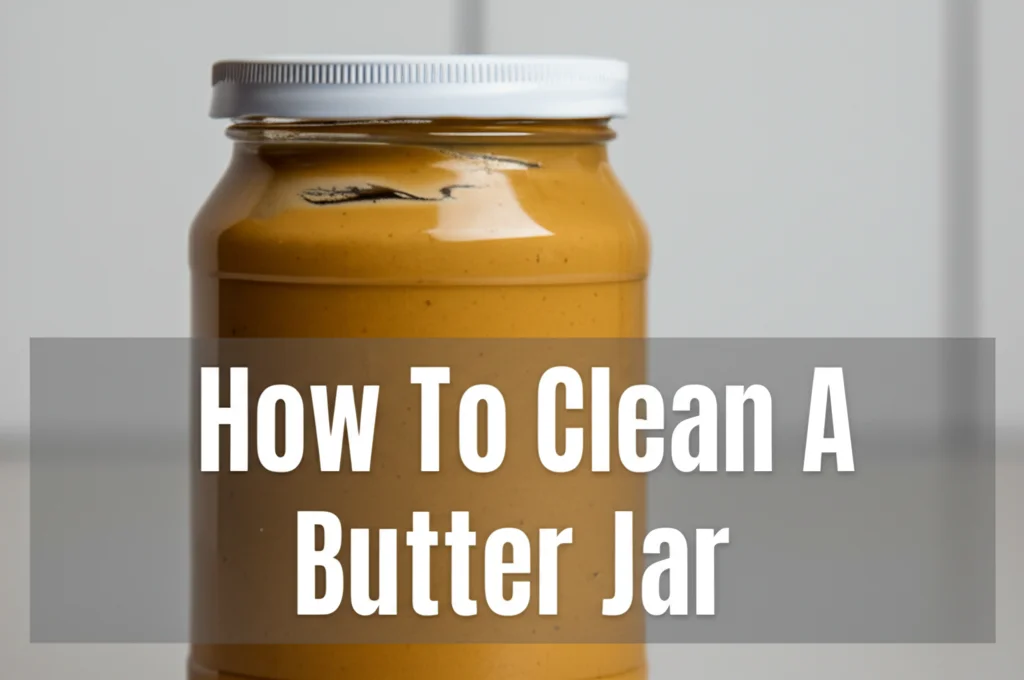· Kitchen Cleaning · 15 min read
How To Clean Burnt Oil From Stainless Steel Pan
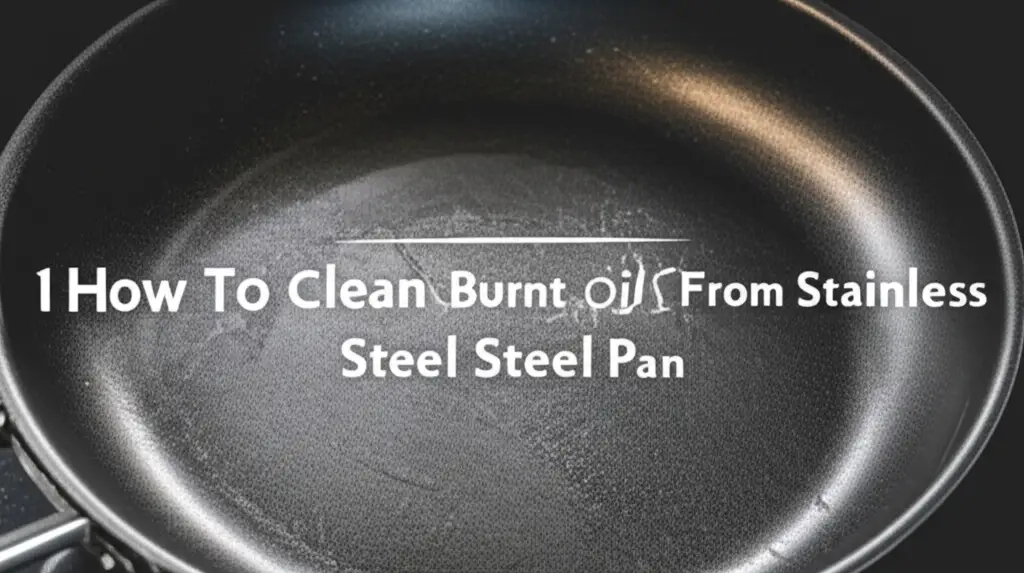
Restore Your Pan: Clean Burnt Oil from Stainless Steel
Burnt oil on a stainless steel pan is a common kitchen problem. It makes your pan look dirty and can affect cooking performance. I know the frustration of seeing that dark, sticky residue after making a meal. But do not worry. Getting rid of these stubborn stains is possible. You just need the right approach and a little patience. This article explains how to clean burnt oil from a stainless steel pan using simple, effective methods. We will explore household remedies and more powerful solutions to make your pan shine again.
Takeaway
- Start with gentle methods like boiling water and dish soap.
- Use baking soda and vinegar for tougher burnt oil stains.
- Apply Bar Keepers Friend for deep cleaning and shine restoration.
- Consider oven cleaner as a last resort for very stubborn grime, with caution.
- Prevent future burnt oil by cleaning pans immediately and using proper cooking heat.
How do you remove burnt oil from stainless steel?
You can remove burnt oil from stainless steel pans by boiling water with dish soap, creating a paste with baking soda and vinegar, or using a specialized cleaner like Bar Keepers Friend. For very stubborn stains, a small amount of oven cleaner can work, but always use it carefully.
Why Burnt Oil Clings to Stainless Steel Pans
Burnt oil sticks firmly to stainless steel. This happens due to a chemical process. When oil gets too hot, it breaks down. It forms a hard, carbonized layer. This layer bonds strongly with the metal surface. High heat causes this bond. The oil does not just evaporate; it changes its structure.
The Science of Burnt-On Residue
Oil contains carbon, hydrogen, and oxygen atoms. When heated past its smoke point, these molecules break apart. They then rearrange into new, stable compounds. These new compounds are often dark and very sticky. They polymerize, meaning they form long chains. This creates a tough, plastic-like film. This film bakes onto the pan surface. It becomes resistant to regular washing. Simple soap and water cannot break these strong bonds.
Avoiding Future Buildup
Prevention is always better than a cure. To stop oil from burning onto your pan, pay attention to cooking temperatures. Do not overheat your pan before adding oil. Use only enough oil for your cooking needs. Avoid excessively high heat settings. Clean your pan immediately after each use. Do not let food or oil sit and dry on the surface. Wipe down any oil splatters quickly. This keeps the pan clean and prevents future layers of burnt residue. Small efforts now save big cleaning jobs later.
Essential Tools and Supplies for Cleaning Burnt Oil
Before you start cleaning, gather your tools. Having everything ready makes the job easier. You will need a mix of common household items and possibly some specialized cleaners. The right supplies help you tackle different levels of burnt oil. Some methods require gentle scrubbing tools. Other methods need protective gear. Always prioritize safety first.
Common Household Heroes
Most kitchens already have these effective cleaners. Dish soap is a must for basic cleaning and soaking. Baking soda is a powerful abrasive and odor absorber. White vinegar helps break down tough grease and stains. These three items often work wonders together. You might also need a non-abrasive sponge or cloth. A plastic scraper can help remove loose burnt bits. Steel wool pads are effective but use them with caution. They can scratch your pan if used too harshly. Always test on a small, hidden area first.
Specialized Cleaners
For truly stubborn burnt oil, consider specialized cleaners. Bar Keepers Friend is a popular choice for stainless steel. It contains oxalic acid, which dissolves rust and stains. This cleaner polishes the surface as it cleans. Another powerful option is oven cleaner. Oven cleaner contains strong chemicals that break down carbonized food and grease. However, it is very potent. Always use oven cleaner as a last resort. Wear gloves and ensure good ventilation when using it. Read product instructions carefully. Never mix different cleaning agents. Using the right tool for the job makes all the difference.
Step-by-Step Guide: The Boiling Water and Dish Soap Method
This is your first line of defense. It is simple, gentle, and often effective for mild to moderate burnt oil stains. This method relies on hot water and soap to loosen the burnt residue. It works by softening the carbonized oil. The heat helps to expand the metal, which can also help release the grime. This method avoids harsh chemicals. It is safe for all stainless steel pans.
When to Use This Method
Use the boiling water and dish soap method for fresh burnt oil. It also works well for layers that are not too thick. If you just had a cooking mishap, try this first. It is ideal for daily maintenance. This method is also suitable if you prefer non-toxic cleaning. It prepares the pan for more intensive cleaning if needed. It saves you from immediate harsh scrubbing.
Detailed Instructions
- Fill the pan with water: Pour enough water into the pan to cover the burnt area completely.
- Add dish soap: Squeeze a generous amount of liquid dish soap into the water. About a tablespoon or two should be enough.
- Bring to a boil: Place the pan on the stove. Heat the water until it starts boiling vigorously.
- Simmer for 10-15 minutes: Reduce the heat to a simmer. Let the mixture continue to bubble gently. The hot soapy water will soften the burnt oil.
- Cool and scrape: Turn off the heat. Let the water cool down in the pan. Once cool enough to handle, pour out the water. Use a wooden or plastic scraper to remove the loosened burnt bits. Do not use metal scrapers, as they can scratch your pan.
- Wash and rinse: Wash the pan as usual with dish soap and a sponge. Rinse thoroughly with warm water. Repeat if necessary for remaining residue. This step-by-step approach handles many everyday burnt oil issues with ease.
Tackling Stubborn Burnt Oil with Baking Soda and Vinegar
When the boiling water method is not enough, turn to baking soda and vinegar. This combination creates a powerful cleaning reaction. It is still a natural, non-toxic approach. The fizzing action helps lift stubborn burnt oil. Many people already have these items in their pantry. This method offers a strong alternative to harsh chemicals.
The Chemical Reaction
Baking soda is sodium bicarbonate, a mild alkali. Vinegar is acetic acid. When these two combine, they produce carbon dioxide gas. This gas creates bubbles. These bubbles help lift and break down the burnt oil particles. The abrasive texture of baking soda also assists in scrubbing. The acid in vinegar helps dissolve grease. Together, they form a formidable team against tough stains. This reaction is safe and effective for stainless steel.
How to Apply This Paste
- Remove loose bits: First, scrape off any loose burnt bits from the pan. You can use a wooden or plastic scraper.
- Make a paste: Sprinkle a generous layer of baking soda over the entire burnt area. Add a small amount of white vinegar over the baking soda. It will fizz immediately.
- Let it sit: Allow the paste to sit on the burnt oil for at least 15-30 minutes. For very stubborn stains, let it sit for a few hours or even overnight. The longer it sits, the more it will work to break down the grime.
- Scrub gently: After soaking, use a non-abrasive sponge, a soft brush, or a damp cloth to scrub the pan. Apply gentle circular motions. The paste will act as a mild abrasive.
- Rinse thoroughly: Rinse the pan well with warm water. Check for any remaining residue. Repeat the process if needed. This method often removes stains that seem impossible.
Unleashing the Power of Cream of Tartar for Stainless Steel
Cream of tartar is a less commonly known cleaning agent. However, it is highly effective for stainless steel. It is a natural acidic powder. Many people use it in baking. But it also works wonders on discolored stainless steel. It helps restore the pan’s original shine. This method is another gentle, non-toxic option. It brightens dull surfaces as it cleans.
How Cream of Tartar Works
Cream of tartar is potassium bitartrate. It is mildly acidic. This acidity helps break down mineral deposits and light stains. It acts as a chelating agent. This means it binds to metal ions and helps lift them. When combined with water or vinegar, it forms a mild abrasive paste. This paste can scrub away grime without scratching the pan. It is particularly good for removing bluish or yellowish discoloration. These often come from heat or hard water.
Practical Application Steps
- Prepare the pan: Ensure the pan is empty and dry. Remove any loose food particles.
- Make a paste: Mix cream of tartar with a small amount of water or white vinegar. Add liquid gradually until you have a thick paste. The consistency should be like toothpaste.
- Apply the paste: Spread the paste generously over the burnt oil and any discolored areas. Make sure it covers the entire affected surface.
- Let it sit: Allow the paste to sit on the pan for at least 15-30 minutes. For tougher stains, let it sit for a few hours. The longer contact time helps the acid work its magic.
- Scrub and rinse: Use a soft cloth or sponge to scrub the paste into the stain. Use small circular motions. You will see the grime start to lift. Rinse the pan thoroughly with warm water. Dry the pan completely to prevent water spots. Your stainless steel pan should look much brighter and cleaner.
Using Bar Keepers Friend for Deep Cleaning Burnt Oil Stains
When natural methods fall short, Bar Keepers Friend steps in. This cleaner is specifically designed for stainless steel. It contains oxalic acid. Oxalic acid is a powerful component that dissolves rust, tarnish, and hard water stains. It is also very effective on burnt-on food and oil. Many professional chefs trust this product. It restores the original luster of stainless steel. It provides a deep clean without harsh abrasion.
Benefits of Bar Keepers Friend
Bar Keepers Friend is non-bleach. It is safe for most kitchen surfaces, including stainless steel. It cleans, polishes, and removes rust. It is particularly good at eliminating the dark, carbonized layer of burnt oil. It does this without leaving scratches when used correctly. It leaves your pan looking almost new. It is also relatively affordable and easy to find. This cleaner is a must-have for stainless steel pan owners. It makes burnt oil removal straightforward.
Proper Usage Techniques
- Wet the pan: Lightly wet the affected area of your stainless steel pan. This helps activate the cleaner.
- Sprinkle Bar Keepers Friend: Sprinkle a small amount of Bar Keepers Friend powder directly onto the wet stain. You do not need a large amount; a little goes a long way.
- Create a slurry: Add a few drops of water to the powder. Mix it with your fingers or a sponge to create a thin paste or slurry.
- Scrub with a soft cloth: Use a damp, non-abrasive sponge or cloth. Gently rub the paste into the burnt oil stain. Always rub in the direction of the grain of the stainless steel. This helps prevent minor scratches. Use consistent, firm pressure.
- Rinse thoroughly: Rinse the pan completely under running water. Ensure all residue is gone.
- Dry immediately: Dry the pan with a clean towel immediately. This prevents water spots and maintains the shine. For tough stains, you might need to repeat the process. Bar Keepers Friend is a powerful solution for restoring your pan.
Extreme Measures: Oven Cleaner for Very Stubborn Burnt Oil
Sometimes, burnt oil becomes so baked on, it seems impossible to remove. In these rare cases, oven cleaner can be a last resort. Oven cleaners are extremely potent. They are designed to break down tough grease and carbon. However, they contain strong chemicals. Use them with extreme caution. This method is only for stainless steel pans. Do not use it on non-stick surfaces or pans with other coatings. Always prioritize safety over speed when using this product.
Safety First: Precautions
Using oven cleaner requires strict safety measures. Always work in a well-ventilated area. Open windows or use an exhaust fan. Wear rubber gloves to protect your hands. Wear eye protection, such as safety goggles. Avoid breathing in the fumes. Do not use oven cleaner near food or children. Do not let it sit for longer than recommended. Test a small, hidden area of your pan first. This checks for any adverse reactions. Read the specific product instructions carefully before starting.
Application and Ventilation
- Work in a well-ventilated area: Take the pan outside or into a garage if possible. If not, open all windows in your kitchen. Turn on the exhaust fan to full power.
- Apply the oven cleaner: Spray a thin, even layer of oven cleaner directly onto the burnt oil. Do not spray more than necessary. Avoid getting it on other parts of the pan.
- Let it sit (briefly): Allow the cleaner to sit for a short period. Check the product label for exact timing. Often, 5-10 minutes is enough. Do not leave it on for too long.
- Scrub carefully: Use a stiff plastic brush or a non-abrasive sponge. Scrub the burnt areas gently. The residue should start to lift.
- Rinse thoroughly: Rinse the pan multiple times under hot running water. Make sure all chemical residue is gone. Use dish soap to wash the pan thoroughly after rinsing.
- Dry completely: Dry the pan with a clean towel. This method is powerful but requires great care.
Maintaining Your Stainless Steel Pan to Prevent Burnt Oil
Once your stainless steel pan is clean, keep it that way. Regular maintenance prevents burnt oil from building up again. Proper care extends the life of your pan. It also ensures better cooking results. A well-maintained pan is a joy to use. These simple habits save you time and effort in the long run.
Daily Cleaning Habits
Clean your pan immediately after each use. Do not let food or oil dry and stick. Use warm water, dish soap, and a soft sponge. If food is stuck, soak the pan in hot soapy water for a few minutes. Then, scrub gently. Avoid abrasive scrubbers for daily cleaning. This prevents scratches. Always dry your pan completely after washing. Water spots can form on stainless steel. Drying prevents these unsightly marks. This regular cleaning keeps your pan ready for the next meal.
Proper Cooking Practices
Using your pan correctly also prevents burnt oil. Do not overheat an empty pan. Stainless steel heats up quickly. Use medium heat settings for most cooking. Add oil to the pan when it is hot, but not smoking. Ensure your oil has a high smoke point for high-heat cooking. Spread oil evenly across the pan surface. Do not use too little oil, as this can cause food to stick and burn. If something does burn, remove it promptly. Clean the pan as soon as it cools down. These practices help avoid stubborn burnt oil. They keep your pan in top condition.
FAQ Section
How do I remove stubborn burnt oil from a stainless steel pan?
For stubborn burnt oil, create a thick paste using baking soda and a little water or vinegar. Apply the paste generously to the burnt area. Let it sit for several hours or overnight. Then, scrub with a non-abrasive sponge. Rinse thoroughly. This method works by breaking down the carbonized oil.
Can I use steel wool on stainless steel pans?
You can use fine steel wool or a scouring pad on stainless steel pans with caution. Always rub in the direction of the metal’s grain to minimize scratches. Avoid using coarse steel wool, as it can scratch the surface permanently. Test a small, hidden area first to check for any damage.
What is the best cleaner for burnt stainless steel?
Bar Keepers Friend is one of the best cleaners for burnt stainless steel. Its oxalic acid component effectively dissolves tough stains, rust, and burnt-on food. Apply it with a damp cloth, rub gently, and rinse well. It restores the pan’s original shine and removes discoloration.
How do I prevent oil from burning on my stainless steel pan?
To prevent oil from burning, preheat your pan to the correct temperature before adding oil. Use a medium heat setting for most cooking. Add oil only when the pan is hot, but not smoking. Also, use enough oil to coat the bottom of the pan evenly. Clean your pan immediately after use.
Is it safe to use oven cleaner on stainless steel pans?
Using oven cleaner on stainless steel pans is safe only as a last resort for very severe burnt oil. It contains harsh chemicals. Always work in a well-ventilated area. Wear gloves and eye protection. Follow the product instructions precisely, and rinse the pan thoroughly to remove all chemical residue.
How do you get baked-on grease off stainless steel?
To get baked-on grease off stainless steel, boil water with dish soap in the pan to loosen it. For tougher grease, make a paste of baking soda and vinegar, apply it, and let it sit before scrubbing. Bar Keepers Friend is also highly effective for baked-on grease and restoring shine.
Conclusion
Cleaning burnt oil from a stainless steel pan might seem like a big chore. But with the right methods, it is simple. I hope this guide helps you restore your pans to their former glory. We explored gentle methods like boiling water with dish soap. We also covered more powerful solutions such as baking soda and vinegar, cream of tartar, and Bar Keepers Friend. Remember to use oven cleaner only when absolutely necessary and with extreme care.
The key to long-term pan health is prevention. Clean your pan after every use. Practice proper cooking temperatures. These habits keep your stainless steel looking great and performing its best. Do not let burnt oil stains discourage you. You now have the knowledge to tackle any burnt oil challenge. Take pride in your clean, shining kitchenware. A clean pan makes cooking more enjoyable. Get ready to cook without worrying about stubborn stains!
- burnt oil
- stainless steel pan
- cleaning tips
- kitchen hacks
- stubborn stains
- home remedies
- deep cleaning

